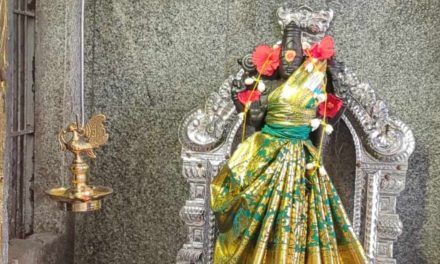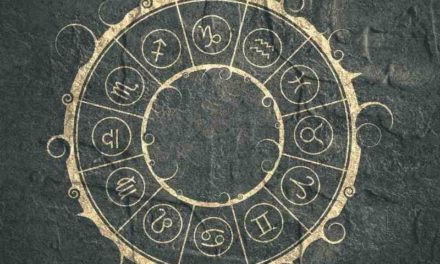1028 Hymns are featured prominently in the Rig Veda, which has ten major components known as Mandalas. Each maala contains sktas (hymns), which are composed of individual strophes known as c (ric), which is where the term Rig Veda comes from. Does the Rigveda consists of 1028 hymns? Let us take an depth review into the nature of the Rig Veda.
As the oldest of the four Vedas, and one of the most significant books in Hinduism, the Rig Veda has a long and illustrious history of discovery and transmission. It is a vast collection of hymns to the gods that are sung during different ceremonies. They were written in an ancient language known as Vedic, which developed into classical Sanskrit through time.
One of Hinduism’s four sacred books, the Rig Veda is a collection of Vedic Sanskrit songs that is considered to be one of the Vedas, or Vedic hymns. The Rig Veda is one of the oldest religious scriptures still venerated by a living religion, having been composed between 1500 and 1200 BCE.
Ten volumes, known as maalas, contain the Rig Veda’s 1028 hymns, which are organized into a unified whole.
Each maala contains sktas (hymns) composed of separate strophes named c (ric), which gives the Rig Veda its name. The philological and linguistic evidence suggests that the Rig Veda is one of the earliest extant writings in any Indo-European language and most likely began between 1500 and 1200 BCE in the area of modern-day Pakistan.
Manuscripts
Padaptha form of the hymns, written on coarse paper by a number of different scribes, reflecting a word-for-word recital of the hymns, is represented by this manuscript. The red accent markings denote three distinct accents: udtta, sharp; anudtta, unmarked low; and svarita, grave accent.
As one of the four holy Veda texts in Hinduism, this Rigveda text is regarded to be very important. The Rigveda Samhita is the depth of the canonical writings. This is a compilation of over a thousand hymns called suktas and well over ten thousand verses organized into 10 mandalas or books.
The hymns and poems are centered on the adoration and worship of deities, but also include other thought-provoking and intellectual elements. These topics are addressed in hymns that address contemporary social concerns. To this day, the compilation is regarded as holy and devout and has great significance in Hindu culture. It is the precedent for all subsequent religious texts.
The Rig Veda’s thoughts and concepts may be summarized as follows:
The Veda is ascribed to eleven rishi families who contributed to the curation of the bulk of the lineage. These contain each clan’s hymns as well as other religious texts used in ceremonies and traditions. The book is divided into two schools, the Sakalya and the Baskala, which contain the Brahmanas and Upanishads.
The Rig Veda is composed of four main sections. This category include the Samhitas, Brahmanas, Aryankas, and Upanishads.
As the earliest part of the Rig Veda, it is comprised of the Samhitas, which are writings containing hymns to the gods. The Brahmanas section contains hymn commentaries. This portion is specifically referred to as the Rigveda Brahmana, while the Samhitas are the common name for the Rig Veda in general. The Aryankas are also known as the forest books, whereas the Upanishads include more religious passages.
A total of 10 Mandalas make up the Veda, each of which performs a certain function. The main aim is to serve as hymns to Hindu gods. There is a collection of tales about many Hindu gods and goddesses, including Surya, Indra, Rudra, Vayu, Agni, and Vishnu. These are the earliest kinds of record that serve as the bedrock of Hinduism.
The Suktas
The Suktas, or tales in the Rig Veda, were a mirror of Hindu philosophy and belief system. They were employed at weddings and other religious rituals for ceremonial reasons. There are other fascinating versions of the Suktas that were intended to ward against sickness and other kinds of negativity in one’s life.
Aspects of morality and appropriate social behavior are also discussed in the Veda. It addresses timely topics such as gambling and the appropriate steps for good governance. It functioned as both a religious text and a moral guide throughout the Vedic and post-Vedic periods.
Mandalas
With several Mandalas, there is a major reference of the subcontinent’s geographical splendor. The hymns are seasonal in nature and discuss each of the major rivers that run through the Indus Valley. It is a critical piece of evidence regarding the Vedic era’s geographical layout of the subcontinent.
There are many additional reasons for which the Veda is carried through over the ages, including remedies for various illnesses, knowledge of weapons and shields, and references of the rains and other seasons.
For centuries, the Veda’s teachings shaped life on the subcontinent. It outlines the proper responsibilities of the various classes, which have been followed and ingrained in society for generations. The compilation’s basic tenets are the significance of religion and kindness. It contains many references to the importance of worship, sacrifices, and religious rites.
Several additional lines and passages from the Veda and its teachings are remembered and repeated on auspicious occasions even now, which shows how deeply ingrained they are. Thus, these prayers and words constitute the world’s oldest religious texts, which are still in use in the modern day.
Five schools or shakhas
The Rig Veda is divided into five schools or shakhas, of which only two have survived to the modern day. The interplay of the sounds and phonetics was critical in maintaining the language in its purest form.
It’s fascinating to discover that the Rig Veda was not written down until the fourth century AD, yet it was preserved within the confines of Hindu society. The earliest Vedic manuscript is in Brahmi script, which was the prevalent dialect at the time the language was preserved as text.
Consequently, throughout the Vedic era, the Rig Veda, which would become a vitally important religious pillar, took shape. The Veda therefore gained ultimate significance due to its wealth of information, as it still does in Hinduism today.
Aitareya and Kaushitaki
There are just two brahmanas in the Rig: Aitareya and Kaushitaki. The Kaushitaki is an Ikhshvakus creature. The Aitareya is a source of contention since it discusses soma sacrifice. Surprisingly, very late in the medieval era in southern India, military organizations claiming to be somavanshi ‘kshatriyas’ (allegiant to Aitareya) grew in number, while the real brahmana group continued to vanish.
In contrast to the brahmans of yajur (who later became adhvaryus), the rig is connected with the hotrs, and these rig priests did not always advocate animal sacrifice. This is why Shaunaka shakha lacks a Brahmana, indicating that they were either not fighting for a place in the Brahmana or had lost the fight during the time period when the Brahmanas were composed (note that the Shaunaka belong to Atharva.
But it is not implausible to speculate that a section of the Rig tribes became Atharvans or vice versa; which explains the cultural similarity). Additionally, it is not implausible to assert that both Rig brahmanas (Aitareya and Kaushitaki) were written by warrior tribes (like Ikshvakus).
Intriguingly, the Aitareya Brahmana uses the term Dasyu to refer to those later classified as Vratyas by Manusmriti, including the Chodas (Cholas), Dravidas (Dravidian speakers), Paundrakas (descendants of Vasudeva), Kambhoja, Yavanas (descendants of Turvasu), Sakas (Indo Scythians, worshipers of Narayana.
Dasyus/Vratyas
Personally, we believe that people classified as Dasyus/Vratyas (including Bhagavatas and so-called ‘non-vedic’ tribes) or tribes that practiced aagamic culture were absorbed into tribes that practiced shrauta sacrifices or historical vedic religion as late as the late medieval period in southern India.
However, there is no historical evidence to support this. Shaivism, too, underwent modifications. For example, at this period (medieval and late-medieval), Pashupatas was also assimilated into mainstream Shaivism.
The truth is, it is almost impossible to draw a solid conclusion about the overall culture of Rig, since so many shakhas have been lost. Only two of the perhaps 12 shakhas survive. For instance, the Rig’s Asvalayana Shaka is gone. There is no Ashvalayana Brahmana either, but some assert that the Aitareya Brahmana is.
Again, this allegation dates all the way back to southern India’s Vijayanagar era. Northern India has had far too many invasions and changes, making it impossible to deconstruct certain items for study.
Bhagavan Veda Vyas
Because there was no written language in those days, Bhagavan Veda Vyas wrote all of the Vedas, upanisads, the Gita, the Srimad Bhagavatam, and the Mahabharat. Because there was no writing, the Gurus used to instruct students and they used to memorize everything by just hearing it. The Vedas are also known as Sruti, and Smirti, which means hearing and remembering.
Bhagavan Veda Vyas, after collecting the four Vedas, handed the Rig-Veda to sage Jaimini, the Yajur-Veda to teacher Paila, the Sam-Veda to sage Vaisampayana, and the Atharva-Veda to Sumantu Rishi, who then distributed this knowledge to their students, a process known as Guru parampara, which literally translates as “passing
Even if we are fluent in Sanskrit, we cannot comprehend the Rig Veda. Brahman, the Rig Vedic deity, is incompatible with all languages, including Sanskrit. As a result, the Rig Vedic Verses are written in allegory.
Vedic meditation
Due to the allegory of the Rig Vedic texts, we need an infinite source of semi-automatic force. This force is composed of both manual and automated components. The manual component allows one to understand the literal meaning, while the automated component enables one to understand the intended meaning.
A system of exercises known as Vedic meditation, the Rig Veda is the foundation of the system. Without understanding of it, we can only understand the passages’ literal meanings.
We are not required to understand the meanings of all 10,600 Rig Vedic verses. In fact, the Rig Vedic texts do not include the Hindu concept of ultimate knowledge known as Brahmajnana.
The Rig Vedic poems are a vehicle for seven-stage thoughts. One does not need to be familiar with all of the Rig Veda’s passages in order to comprehend it. The most often performed Suktas are also the most beneficial. The Rig Veda passages are similar to parts of a jigsaw puzzle that, when completed, reveals and installs the Hindu ultimate deity Brahman.
Understanding the Rig Veda requires some familiarity with the Upanishads. The Rig Vedic poems discuss the seven-stage thinking process and the ideas that result from it. As with a stationary bird, the thinking machinery known as Brahman stays constant, and just this portion must be maintained. What is constantly changing, such as the bird eating the fruit, may be overlooked.
To comprehend the Rig Veda, it is necessary to see it through the lens of knowledge of the seven Puranic gods. I hope this answers the question “Does the Rigveda consists of 1028 hymns?”





